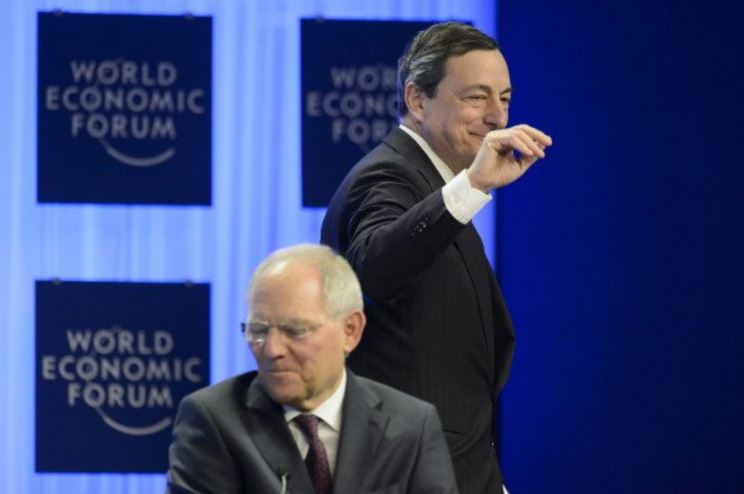Negative interest rates, helicopter money trigger Clash of Titans.
Relations between the government of Europe’s biggest economy, Germany, and Europe’s most powerful financial institution, the European Central Bank, have soured to the point of curdling.
The latest volley of barbed remarks came from Germany’s dour Finance Minister Wolfgang Schäuble, who has never been one to mince his words. Speaking at an awards ceremony outside Frankfurt on April 8, he told the audience that the stellar rise of right-wing populist Alternative für Deutschland party was due in large part to the ECB’s loose monetary policy.
“I told Mario Draghi … you can be very proud,” according to a report by a Dow Jones journalist who was present.
Schäuble’s off-the-cuff remarks set in motion a flurry of caustic statements from other conservative German politicians, with the lion’s share of the ire reserved for the ECB’s negative interest rate policy.
“Mario Draghi’s policies have led to a massive loss of credibility of the ECB,” said the deputy head of the CDU parliamentary group, Hans-Peter Friedrich, who also called for Draghi to be replaced by a German when the Italian completes his term, in 2019. “The next ECB Chief must be a German, who feels bound to the German Bundesbank’s tradition of monetary stability.”
Friedrich’s sentiments were echoed by the CSU foreign policy expert and member of the Bundestag Hans-Peter Uhl. “We cannot afford another Draghi,” he said. “We need to place a key German financial specialist at the head of the ECB.”
As the German daily Handelsblatt notes, the latest exchange marks a new low for Germany’s policymakers in their relations with the Frankfurt-based ECB. The main trigger for the latest storm of protest was Draghi’s praise last month for the idea of “helicopter money” – showering citizens with newly created money.
…click on the above link to read the rest of the article…



 ANSWER: I believe the answer is rather simple. How can anyone pretend to be analysts if they have never traded? It would be like a man writing a book explaining how it feels to give birth. You cannot analyze what you have never done. It is just impossible. Those who cannot teach and those who can just do.
ANSWER: I believe the answer is rather simple. How can anyone pretend to be analysts if they have never traded? It would be like a man writing a book explaining how it feels to give birth. You cannot analyze what you have never done. It is just impossible. Those who cannot teach and those who can just do. 

 We are finishing up the “Pension Crisis – The Next Nightmare,” which is a special report outlining the next global meltdown. Germany’s Federal Finance Minister Schaeuble is now
We are finishing up the “Pension Crisis – The Next Nightmare,” which is a special report outlining the next global meltdown. Germany’s Federal Finance Minister Schaeuble is now  A metallic conspirator and his flying factotum… Image via sceptic.com
A metallic conspirator and his flying factotum… Image via sceptic.com




